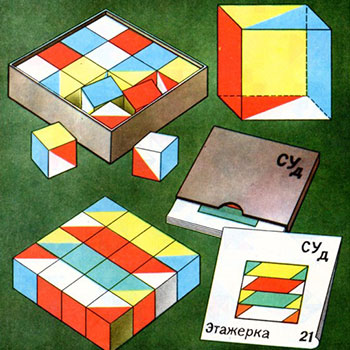Make the internet a better place to learn
How do you convert #(5pi)/7# from radians to degree?

Answer:
It is
Explanation:
From
canceling the
How do you simplify #tan(x+y)# to trigonometric functions of x and y?

Answer:
Explanation:
This can be expanded through the tangent angle addition formula:
#tan(alpha+beta)=(tanalpha+tanbeta)/(1-tanalphatanbeta)#
Thus,
#tan(x+y)=(tanx+tany)/(1-tanxtany)#
The tangent addition formula can be found using the sine and cosine angle addition formulas.
#sin(alpha+beta)=sinalphacosbeta+cosalphasinbeta#
#cos(alpha+beta)=cosalphacosbeta-sinalphasinbeta#
Since
#tan(alpha+beta)=sin(alpha+beta)/cos(alpha+beta)=(sinalphacosbeta+cosalphasinbeta)/(cosalphacosbeta-sinalphasinbeta)#
This can be written in terms of tangent by dividing both the numerator and denominator by
#tan(alpha+beta)=((sinalphacosbeta+cosalphasinbeta)/(cosalphacosbeta))/((cosalphacosbeta-sinalphasinbeta)/(cosalphacosbeta))=(sinalpha/cosalpha(cosbeta/cosbeta)+sinbeta/cosbeta(cosalpha/cosalpha))/(cosalpha/cosalpha(cosbeta/cosbeta)-sinalpha/cosalpha(sinbeta/cosbeta))#
Final round of simplification yields:
#tan(alpha+beta)=(tanalpha+tanbeta)/(1-tanalphatanbeta)#
How do you evaluate # e^( ( 5 pi)/4 i) - e^( ( 3 pi)/8 i)# using trigonometric functions?

Answer:
Explanation:
Euler formula :
How do you express #tan theta - cot theta +sintheta # in terms of #cos theta #?

Answer:
Explanation:
We have to write in terms of
We get
How do you divide # (1-2i) / (6-8i) # in trigonometric form?

First of all we have to convert these two numbers into trigonometric forms.
If
Magnitude of a complex number
Let
Magnitude of
Angle of
Let
Magnitude of
Angle of
Now,
Here we have every thing present but if here directly substitute the values the word would be messy for find
We know that:
This is your final answer.
You can also do it by another method.
By firstly dividing the complex numbers and then changing it to trigonometric form, which is much easier than this.
First of all let's simplify the given number
Multiply and divide by the conjugate of the complex number present in the denominator i.e
Let
Magnitude of
Angle of
How do you divide #( i+8) / (3i -1 )# in trigonometric form?

First of all we have to convert these two numbers into trigonometric forms.
If
Magnitude of a complex number
Let
Magnitude of
Angle of
Let
Magnitude of
Angle of
Now,
Here we have every thing present but if here directly substitute the values the word would be messy for find
We know that:
This is your final answer.
You can also do it by another method.
By firstly dividing the complex numbers and then changing it to trigonometric form, which is much easier than this.
First of all let's simplify the given number
Multiply and divide by the conjugate of the complex number present in the denominator i.e
Let
Magnitude of
Angle of
A triangle has sides A,B, and C. If the angle between sides A and B is #(5pi)/8#, the angle between sides B and C is #pi/4#, and the length of B is 19, what is the area of the triangle?

Answer:
Area
Explanation:
The area of a triangle
In this case
So
Area
How do you express #cos theta - cos^2 theta + cot^2 theta # in terms of #sin theta #?

Answer:
Explanation:
Write in terms of
#=costheta-cos^2theta+cos^2theta/sin^2theta#
Find a common denominator.
#=(costhetasin^2theta)/sin^2theta-(cos^2thetasin^2theta)/sin^2theta+cos^2theta/sin^2theta#
Combine.
#=(costhetasin^2theta-cos^2thetasin^2theta+cos^2theta)/sin^2theta#
The following simplification may seem unecessary, but is actually relevant. Its purpose will become clear in the following step.
#=(sintheta(color(blue)(costhetasintheta))-color(green)(cos^2theta)sin^2theta+color(green)(cos^2theta))/sin^2theta#
Use the following identities:
#color(green)(cos^2theta=1-sin^2theta# #2costhetasintheta=sin2theta=>color(blue)(costhetasintheta=(sin2theta)/2#
#=(sintheta((sin2theta)/2)-(1-sin^2theta)sin^2theta+(1-sin^2theta))/sin^2theta#
#=((sinthetasin2theta)/2-sin^2theta+sin^4theta+1-sin^2theta)/sin^2theta#
#=((sinthetasin2theta)/2-2sin^2theta+sin^4theta+1)/sin^2theta#
#=(2sin^4theta-4sin^2theta+sinthetasin2theta+2)/(2sin^2theta)#
A triangle has sides A, B, and C. The angle between sides A and B is #(5pi)/12# and the angle between sides B and C is #pi/12#. If side B has a length of 3, what is the area of the triangle?

Answer:
Explanation:
As
'~~~~~~~~~~~~~~~~~~~~~~~~~~~~~~~~~~~~~~
Determine
Using Sine Rule and
Determine h using
Determine area
'~~~~~~~~~~~~~~~~~~~~~~~~~~~~~~~~~~~~~~~
Sum internal angles of a triangle is
'~~~~~~~~~~~~~~~~~~~~~~~~~~~~~~~~~
Using
But
'~~~~~~~~~~~~~~~~~~~~~~~~~~~~~~~~~~~~~~
'~~~~~~~~~~~~~~~~~~~~~~~~~~~~~~~~~
but
What are the components of the vector between the origin and the polar coordinate #(1, (5pi)/4)#?
Answer:
The
The
Explanation:
Remembering our trigonometry, the vertical component of a vector is given by
and the horizontal component by
 )
)
in the polar coordinate
Hence:
The
The
In this case,